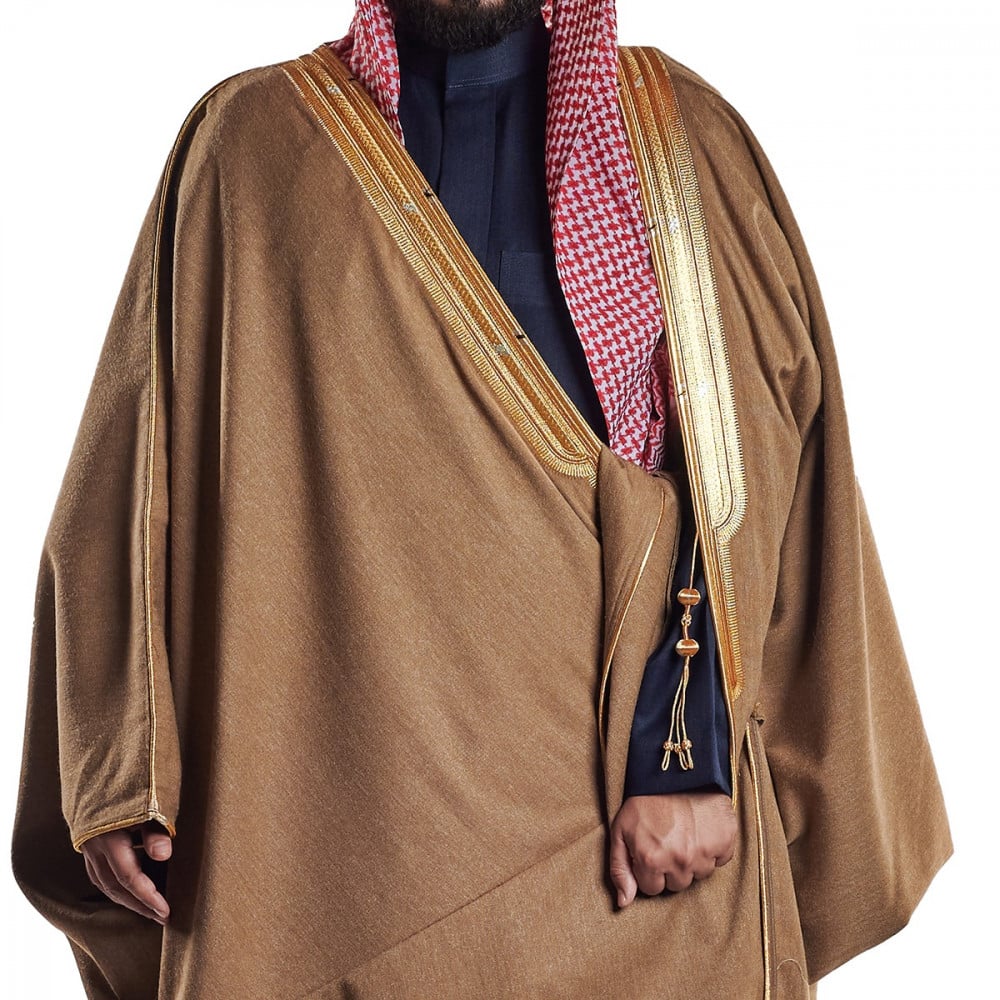Threads of Tradition: Unraveling the Beauty of Saudi Arabia Traditional Clothing

Saudi Arabia traditional clothing, with its rich heritage and deep cultural significance, stands as a vivid representation of the Kingdom’s identity and values. Rooted in the principles of modesty and respect dictated by Islamic teachings, this attire goes beyond mere fashion. It symbolizes a way of life, deeply ingrained in the social fabric of Saudi society. Each garment, whether worn by men or women, carries with it a story of the nation’s past, its present, and its aspirations for the future. As Saudi Arabia strides into modernity, these traditional clothes are not just preserved relics of a bygone era; they are living, evolving symbols of a proud and vibrant culture. This exploration into Saudi Arabia traditional clothing will delve into the intricate details, cultural significance, and the evolving nature of these garments that are much more than mere attire – they are an embodiment of a nation’s soul.
Table of Contents
ToggleSaudi Arabia Traditional Clothing for Men
Thobe (Dishdasha):
The thobe, a staple of Saudi traditional clothing for men, exemplifies elegance and simplicity. Typically white, reflecting the hot climate of Saudi Arabia, it’s an ankle-length, loose-fitting garment, offering comfort and modesty. In winter, darker shades become popular, adapting to the cooler weather. The thobe’s fabric, usually cotton or light wool, varies regionally, incorporating heavier materials in colder areas. This attire is a symbol of cultural identity, widely recognized and respected. It’s practical yet stylish, reflecting the Saudi man’s connection to his heritage.
Shemagh and Ghutra:
Integral to Saudi Arabia traditional clothing, the shemagh and ghutra are head coverings reflecting the desert heritage. The shemagh, with its red and white checks, and the plain white ghutra, are both held in place by the agal. These garments are not just cultural symbols but practical solutions to the harsh desert environment. They protect the head and face from sun and sand. Over time, they have become fashion statements, often indicating the wearer’s region and status.
Bisht:
The bisht, part of Saudi traditional clothing, is a symbol of prestige and elegance. Worn over the thobe, this cloak features intricate embroidery, often in gold or silver. Worn on special occasions like weddings and official events, it distinguishes the wearer as someone of importance. The bisht’s craftsmanship is meticulous, reflecting the rich artistic heritage of Saudi Arabia. It’s a garment that embodies respect and dignity, treasured in Saudi culture.

Saudi Arabia Traditional Clothing for Women
Abaya:
The abaya, central to Saudi traditional clothing for women, has evolved significantly. Once a simple black cloak, it now appears in various colors and styles, often adorned with intricate designs. This garment, while preserving modesty as per Islamic teachings, has become a canvas for fashion and self-expression. Saudi women wear the abaya with pride, showcasing their cultural identity. The modern abaya also blends tradition with contemporary fashion, reflecting the changing dynamics of Saudi society.
Hijab and Niqab:
In Saudi Arabia traditional clothing, the hijab and niqab are significant. The hijab, covering hair and neck, and the niqab, covering the face except for the eyes, symbolize modesty and religious adherence. These garments, deeply rooted in cultural and religious identity, are worn with respect. They are expressions of personal choice and cultural values, integral to the Saudi way of life.
Jalabiya:
The jalabiya, a vibrant part of Saudi Arabia traditional clothing, is often worn at home or during celebrations. It’s also a loose, colorful dress, richly decorated, reflecting the festive spirit of Saudi culture. The jalabiya, differing from the abaya, is more about personal style and comfort. It showcases the rich textile heritage of Saudi Arabia, with intricate embroidery and vivid colors.
Symbolism and Cultural Significance
Saudi traditional clothing is deeply symbolic, embodying the nation’s rich heritage and Islamic values. Each garment, from the thobe to the abaya, carries cultural significance. These clothes are not just for modesty; they’re symbols of identity and pride. They also reflect Saudi Arabia’s history, traditions, and societal norms. Wearing these garments is a way for Saudis to connect with their roots and display their cultural pride.
Saudi Arabia Traditional Clothing: Modern Influences and Evolution
Modern influences have transformed Saudi traditional clothing, blending heritage with contemporary fashion. Young Saudis are redefining traditional wear, infusing it with modern styles while respecting cultural roots. This fusion has given rise to a unique fashion trend, reflecting the dynamic and evolving Saudi identity. It’s a balance between preserving tradition and embracing modernity, showcasing Saudi Arabia’s openness to global influences.
The Future of Saudi Traditional Attire
The future of Saudi Arabia traditional clothing looks vibrant and evolving. As Saudi society modernizes, traditional attire is adapting, maintaining its cultural essence while incorporating contemporary elements. This evolution is a testament to the dynamic nature of Saudi culture, which is rooted in tradition yet open to change. It’s a reflection of a society that values its past while eagerly embracing the future.
Related Topics:
What makes Saudi Arabian traditional clothing unique?
A Saudi fashion designer explains the difference between traditional, folk clothes






